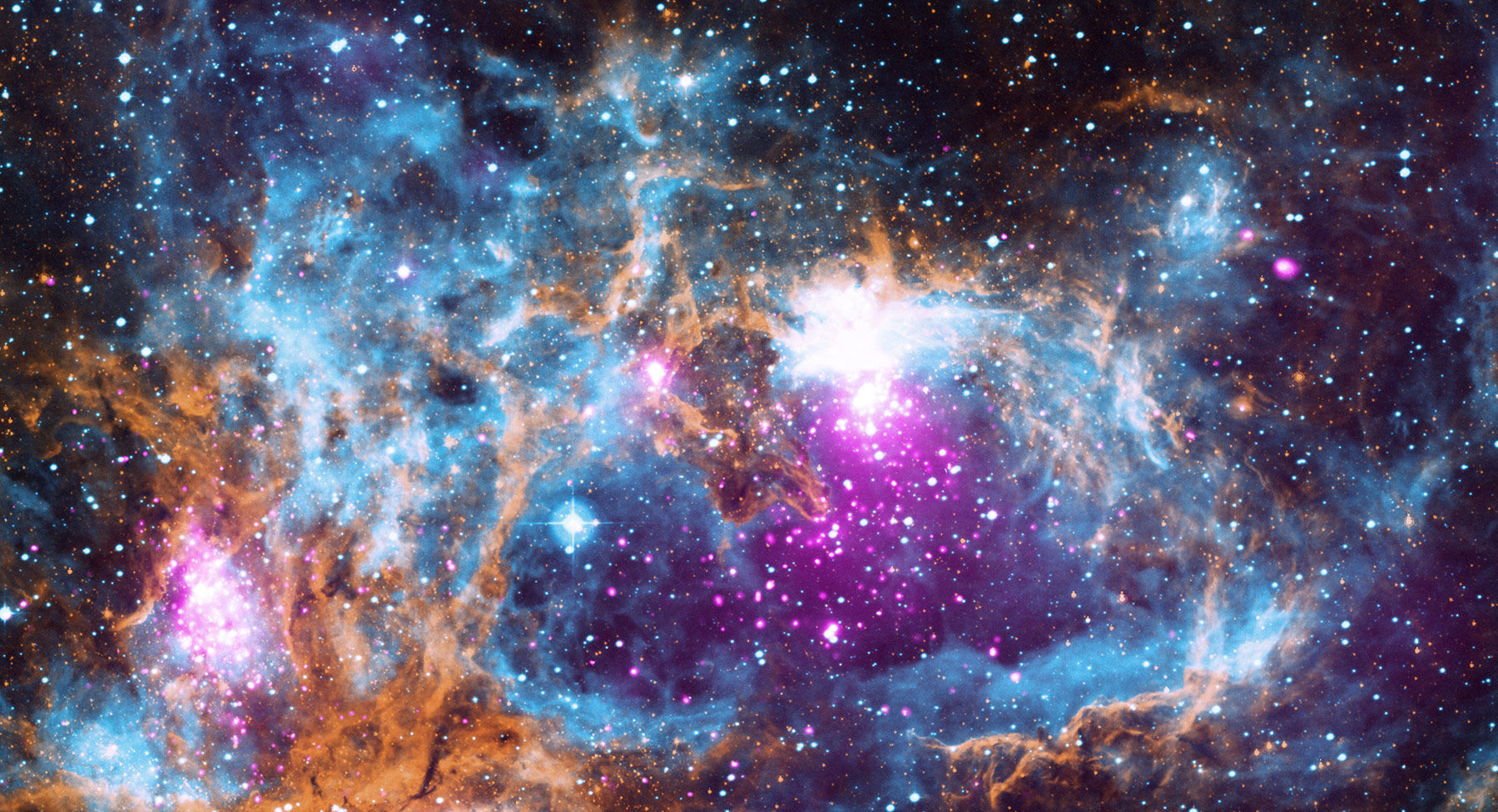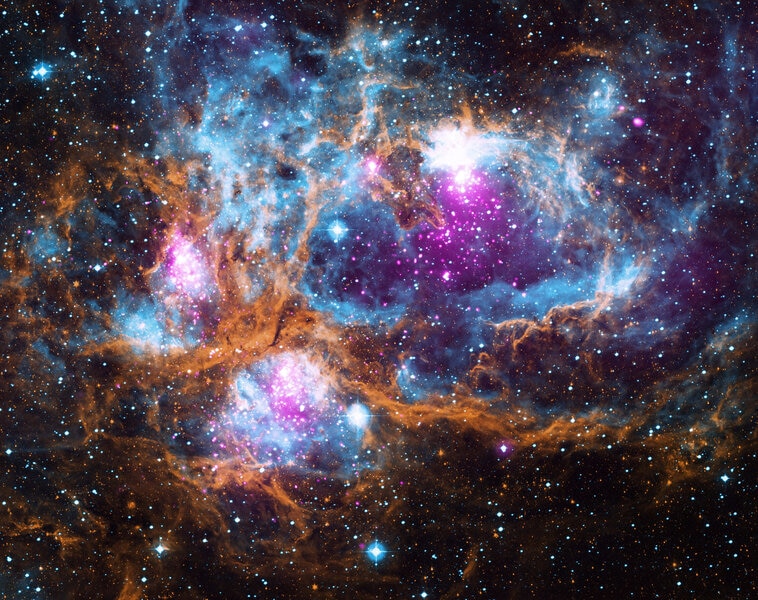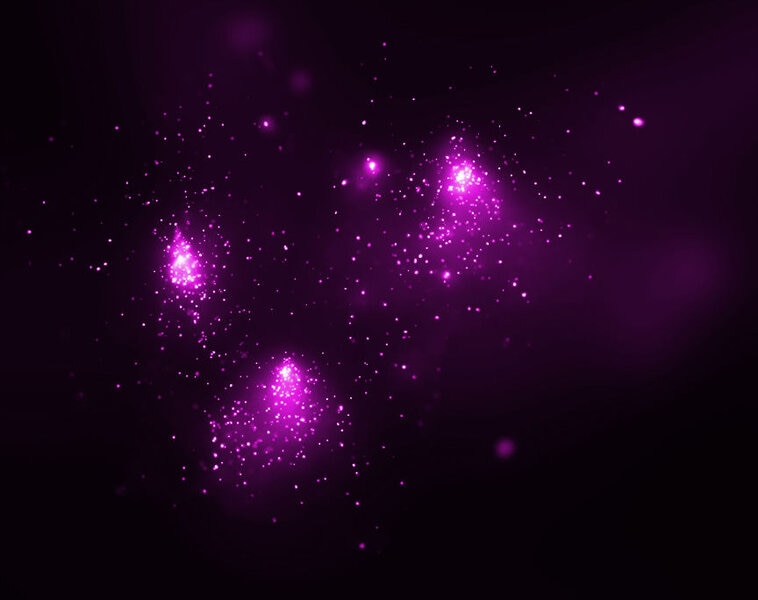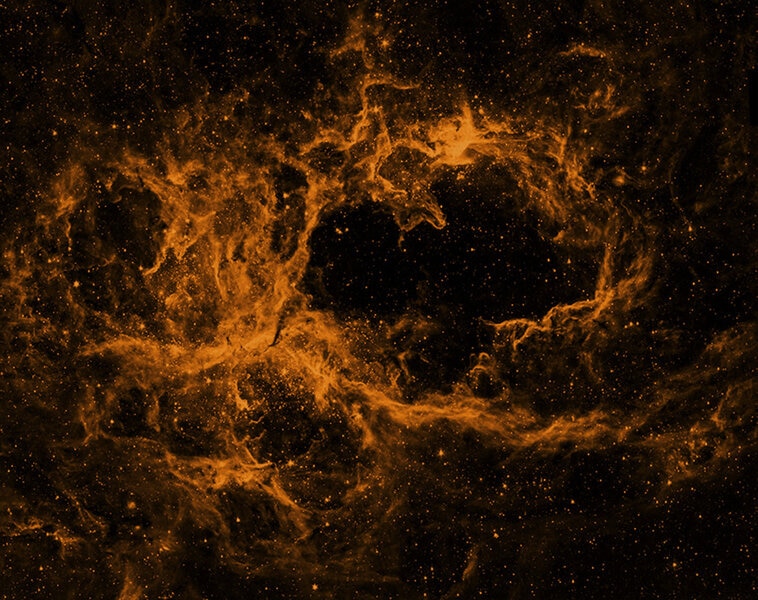Create a free profile to get unlimited access to exclusive videos, sweepstakes, and more!
Better take a look at NGC 6357 now before its stars blow up and disintegrate it

I talk about star birth on the blog a lot, but in my defense there are three reasons for this: 1) It's scientifically very interesting; b) I find it personally very interesting, and γ) the images of it are just devastatingly gorgeous.
More on that last bit in a sec.
Stars are born from huge clouds of gas and dust called, generically, nebulae. These come in lots of flavors, too, from gigantic cold dark clouds to gigantic hot bright clouds (both cranking out thousands of stars simultaneously) down to relatively tiny knots of material forming one star individually at a time.
My favorite part of this process is when a nebula is making lots of stars, and a whole pile of them have already turned on, fusing hydrogen into helium in their cores. As I've written about many times, the most massive of these stars (with many dozens of times the mass of the Sun) are just monsters, blasting out radiation at tens of thousands of times the rate the Sun does. They emit tons of light in the ultraviolet and X-ray parts of the spectrum, and light like these has a lot of energy. It slams into the surrounding material, causing it to glow, and even eats away at the denser material, carving vast cavities into the nebula.
We see this a lot in the sky, but one of the best examples of it is the sprawling nebula NGC 6357, over 5000 light years away in the constellation of Scorpius. It's making a lot of stars, like a lot a lot. And they're not all forming in one place; there are three separate sites inside the nebula cranking out enough stars to form decent-sized clusters of stars.
The thing is, you can see this for yourself. Look!
That is a multi-wavelength multi-telescope view of NGC 6357. What's shown in blue is visible light (the kind we see) showing the location of warm hydrogen gas, taken using the UK Schmidt Telescope. The dusky orange/brown is infrared light seen by Spitzer Space Telescope and coming from dust, which looks dark to our eyes but glows in infrared. Purple is X-rays seen by the Chandra Observatory, some of which is coming from those young massive stars (seen as purple or white dots), and some is more diffuse, coming from the gas around them as they heat it up via complex interactions involving shock waves and magnetic fields.
In this image you can clearly see where these three clusters are; they have each eroded huge holes in the cloud, and you can see that's where the diffuse X-rays are located:
If you examine the image closely (or look at the full-res version which is 3600 x 2850 piles) you can see lots of structure in the dust that look like fingers pointing at the clusters; those are locations where the dust is denser, and can (temporarily) survive the onslaught of light from the massive stars. As material evaporates away from them (that process is called photodissociation) it gets pushed away by the light, forming cosmic sandbars, those fingers that point right back to the source of the light.
You might think that over time these stars will eat their way out of the nebula, but things are little more complicated than that. Those brightest stars go through their fuel supplies extraordinarily rapidly, and only shine for a few million years. After that explode, go supernova, and that does somewhat accelerate the erosion of the surrounding stuff.
Nebulae like this are spectacular and gorgeous but they will become victims of their own fecundity. Supernova after supernova will tear them apart from the inside, and the stars themselves will eventually disperse as well. In a few tens of millions of years NGC 6357 will be no more.
Happily, there are plenty of large nebulae like it in the Milky Way, many of which haven't really gotten their mojo together enough yet to form stars at this rate.
... Though, to be fair, and extending the timeline somewhat, there is a finite amount of material in the galaxy from which to make stars. It's already on the decline in that business, in fact. Sometime in the future, a billion years or more, there won't be enough gas left to form stars, and over time the galaxy's brilliant starlight will fade.
But that's not for a long time yet. We live in a time when celestial fireworks are common, so honestly, we should enjoy the show while we can.





























